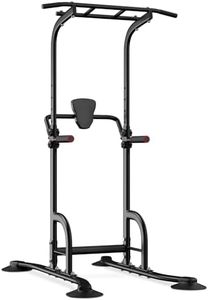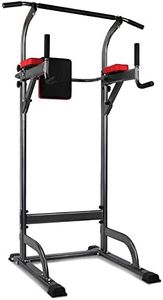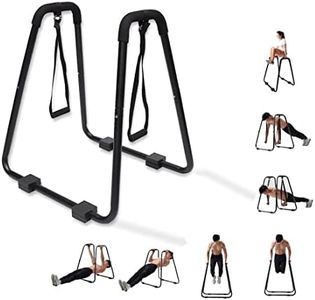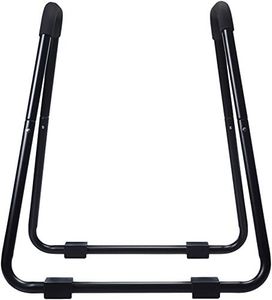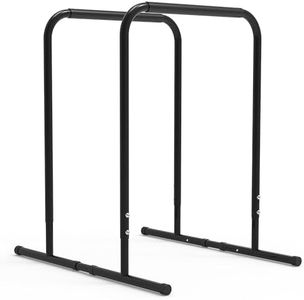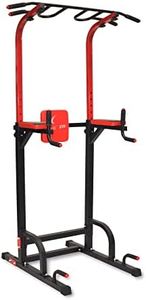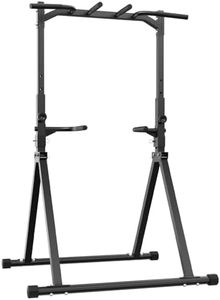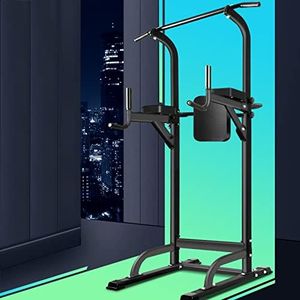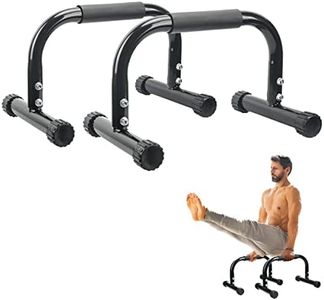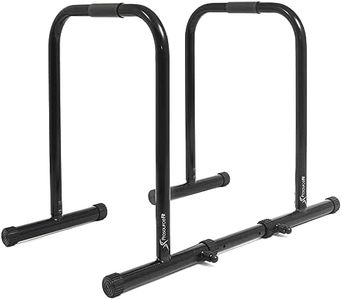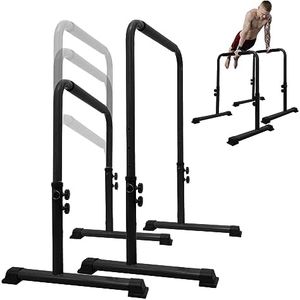We Use CookiesWe use cookies to enhance the security, performance,
functionality and for analytical and promotional activities. By continuing to browse this site you
are agreeing to our privacy policy
10 Best Dip Bars
From leading brands and best sellers available on the web.Buying Guide for the Best Dip Bars
Choosing the right dip bars can make a big difference in your bodyweight exercise routine. Dip bars are simple yet versatile pieces of equipment used for upper body strength training, especially for exercises like dips, leg raises, and sometimes push-ups or rows. When picking dip bars, you’ll want to focus on their stability, comfort, and how well they fit into your space and workout style. Knowing what to look for will help you stay safe during exercises and get the best results for your training goals.Stability and Weight CapacityStability refers to how firmly the dip bars stay in place during use, and weight capacity is the maximum load they can safely support. This is important because stable bars reduce the risk of accidents and injuries, and a high weight capacity ensures the bars can handle not only your body weight but also any extra load, like weighted vests. Dip bars can range in weight capacity from around 200 to over 500 pounds. If you are heavier or plan to add extra weight, choose bars with a higher capacity. For lighter or casual use, a lower rating may be sufficient, but stability should always be a top priority for safety and comfort.
Adjustability and HeightSome dip bars have adjustable heights, while others are fixed. Adjustable bars are useful if you want to target different exercises or share the equipment with people of various heights. Heights can range from about 28 inches to over 40 inches. Taller bars are better for people who are taller or who want to do exercises like leg raises. Shorter bars may suit shorter users or people with limited ceiling space. Pick a height that matches your body size and preferred exercises to get the most versatile and comfortable setup.
Bar WidthBar width is the distance between the two parallel bars. This measurement affects your grip and body position during exercises. Narrow bars can make dips easier for those with narrow shoulders or for beginners, while wider bars may feel more natural for broader individuals or for targeting different muscles. Most dip bars range from about 18 to 26 inches wide. Consider your own shoulder width and comfort—choose a bar width that allows you to perform exercises with correct form and without strain.
Grip Comfort and MaterialThe material and finish of the bars affect how comfortable and secure your grip will be. Some bars are just bare metal, while others offer foam or rubber coatings. A grippy, slightly cushioned handle can make high-repetition workouts more comfortable and prevent slipping due to sweat. If you have sensitive hands or plan to use the bars often, look for ones with padded or textured grips. Otherwise, smooth metal can work but may require workout gloves for better comfort.
Portability and StorageDepending on your available space, portability may be a key factor. Some dip bars are lightweight and easy to move or even fold flat when not in use, while others are heavier and intended to stay in one place. If you need to store your bars after use or want to take them outdoors or to different locations, look for portable or foldable designs. For a permanent gym setup, sturdier, fixed models might suit you better. Match this feature with your space and how you plan to integrate the bars into your routine.
Assembly and MaintenanceSome dip bars require assembly, and the ease of putting them together can vary. Simple designs may be ready out of the box, while larger or adjustable models might need tools and more time. If you prefer convenience or are not handy with assembling fitness equipment, pick bars that are easy to set up and maintain. Also, consider how easy it is to clean or check nuts and bolts regularly for safety.
